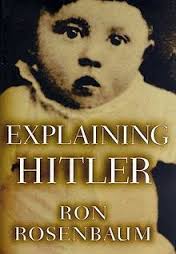
 Whenever you look at a map which shows the distribution of Y chromosomal haplogroup R1b you see two areas where the frequency seems very high. First, Western Europe has a very high frequency. Before 2010 it was commonly assumed that R1b was the heritage of late Pleistocene European hunter-gatherers. Around 2010 deeper analysis suggested perhaps that this was not so, and that the deepest divisions in the phylogeny of Eurasian R1b could be found to the east. The high frequency of this haplogroup then may have been an artifact of the Holocene.
Whenever you look at a map which shows the distribution of Y chromosomal haplogroup R1b you see two areas where the frequency seems very high. First, Western Europe has a very high frequency. Before 2010 it was commonly assumed that R1b was the heritage of late Pleistocene European hunter-gatherers. Around 2010 deeper analysis suggested perhaps that this was not so, and that the deepest divisions in the phylogeny of Eurasian R1b could be found to the east. The high frequency of this haplogroup then may have been an artifact of the Holocene.
Ancient DNA has confirmed this hypothesis. The high frequency of R1b in Western Europe seems to date to the Bronze Age. Though R1b is not found exclusively in Indo-European peoples and existed at low frequencies in Pleistocene Europe, its current ubiquity in Europe seems likely related to demographic turnover between 3 and 5 thousand years ago.
 If I had to bet I think R1b, like R1a, originates among the North Eurasian people who mixed with West Eurasians and Amerindians. The Ma’lta boy, for example, seems to have been a basal R.
If I had to bet I think R1b, like R1a, originates among the North Eurasian people who mixed with West Eurasians and Amerindians. The Ma’lta boy, for example, seems to have been a basal R.
But notice a secondary mode of R1b in Africa. This is R-V88. The highest frequencies of this Y chromosomal haplogroup are found in Chadic speaking populations. Chadic is a basal group in the Afro-Asiatic language family. A few years ago a paper was published using autosomal DNA on Chad populations and suggested that Eurasian backflow occurred in deep antiquity. From that paper:
We estimate that [autosomal] mixture occurred 4,750–7,200 ya, thus after the Neolithic transition in the Near East…In Chad, we found a Y chromosome lineage (R1b-V88) that we estimate emerged during the same period 5,700–7,300 ya
 A new paper, The peopling of the last Green Sahara revealed by high-coverage resequencing of trans-Saharan patrilineages, really gets to the origin of R-V88, with a massive Y data-set. There’s a lot of other Y lineages that are surveyed in this work, but in the supplements, the figure makes it clear that Sardinian R-V88 is basal to star-like African topologies. The implication here is that the African lineages derive from European ones.
A new paper, The peopling of the last Green Sahara revealed by high-coverage resequencing of trans-Saharan patrilineages, really gets to the origin of R-V88, with a massive Y data-set. There’s a lot of other Y lineages that are surveyed in this work, but in the supplements, the figure makes it clear that Sardinian R-V88 is basal to star-like African topologies. The implication here is that the African lineages derive from European ones.
 The autosomal paper found Chad populations (though the one in question was not Chadic speaking) seem to share drift from Sardinians in particular. Looking at ancient genomes Early European Farmers seem to have been the primary donor population. Additionally, the coalescence of the African lineages seems to date to 5 to 6 thousand years before the present.
The autosomal paper found Chad populations (though the one in question was not Chadic speaking) seem to share drift from Sardinians in particular. Looking at ancient genomes Early European Farmers seem to have been the primary donor population. Additionally, the coalescence of the African lineages seems to date to 5 to 6 thousand years before the present.
Though not definitive, the association of Afro-Asiatic populations with R-V88 is strongly suggestive to me of the possibility that some western Near Eastern Farmers spoke Afro-Asiatic languages.


